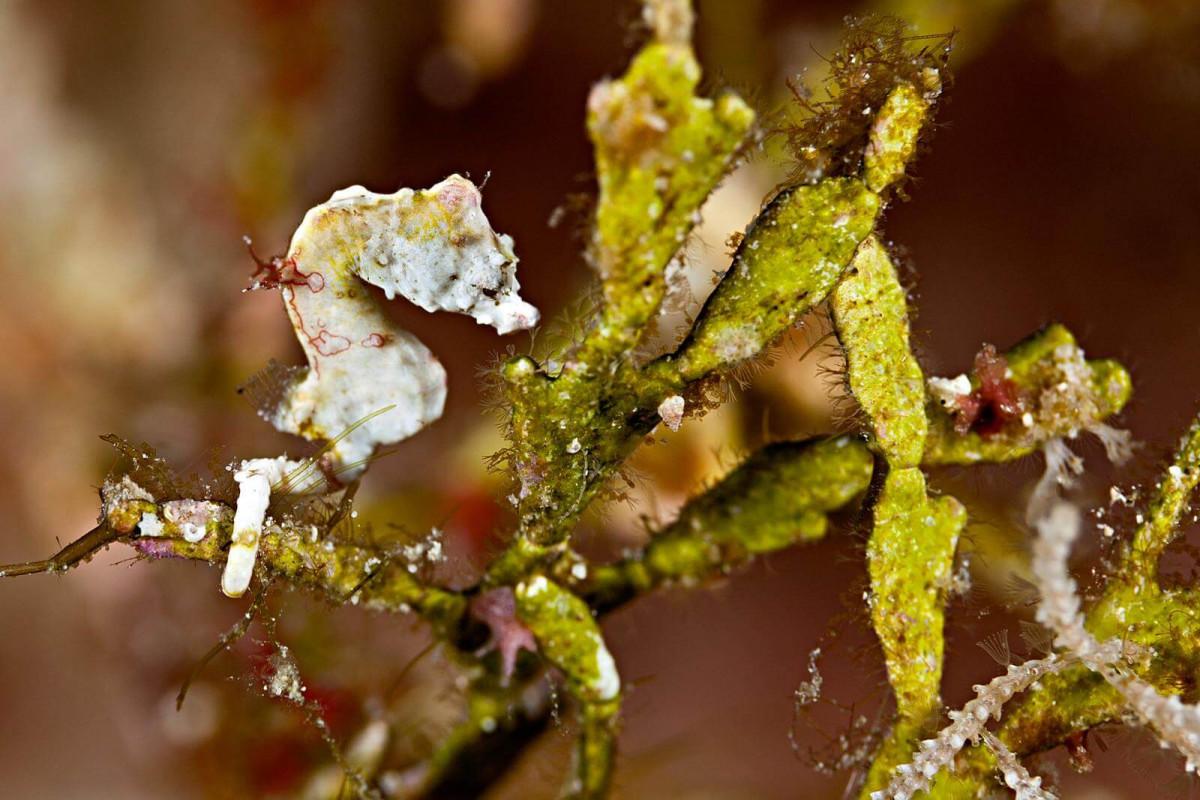Wakatobi's reefs are alive with thousands of small and unique marine life treasures, and you don’t have to go far or search for long to find them.
Prime hunting grounds begin at the resort’s famed House Reef and stretch across more than 20 kilometers of protected and pristine reef.
Experienced critter hunters will have a ball tallying up each new discovery on Wakatobi Dive Resort’s doorstep as they find the most diminutive and secretive reef dwellers you can imagine.
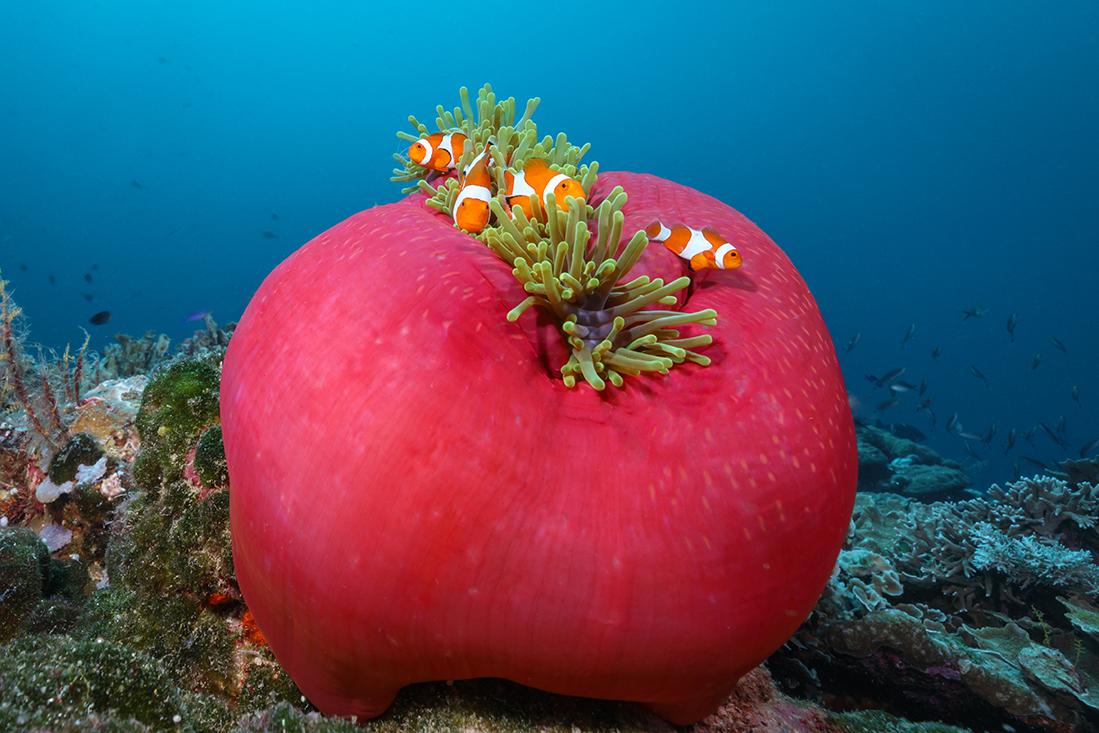
Tentacle Treasures
The tentacles of sea anemones are a great place to start looking for small treasures in the waters of Wakatobi.
Colorful carpets of these stationary predators adorn the slopes of the House Reef and similar colonies are found on all of the signature sites within the resort’s private marine preserve.
In addition to adding color and variety to the seascapes, anemones provide shelter for a range of tenants. Best known are the clownfish, which remain a favorite with photographers.
Look closer and you can see a few varieties of small shrimp tucked among the protective tentacles.
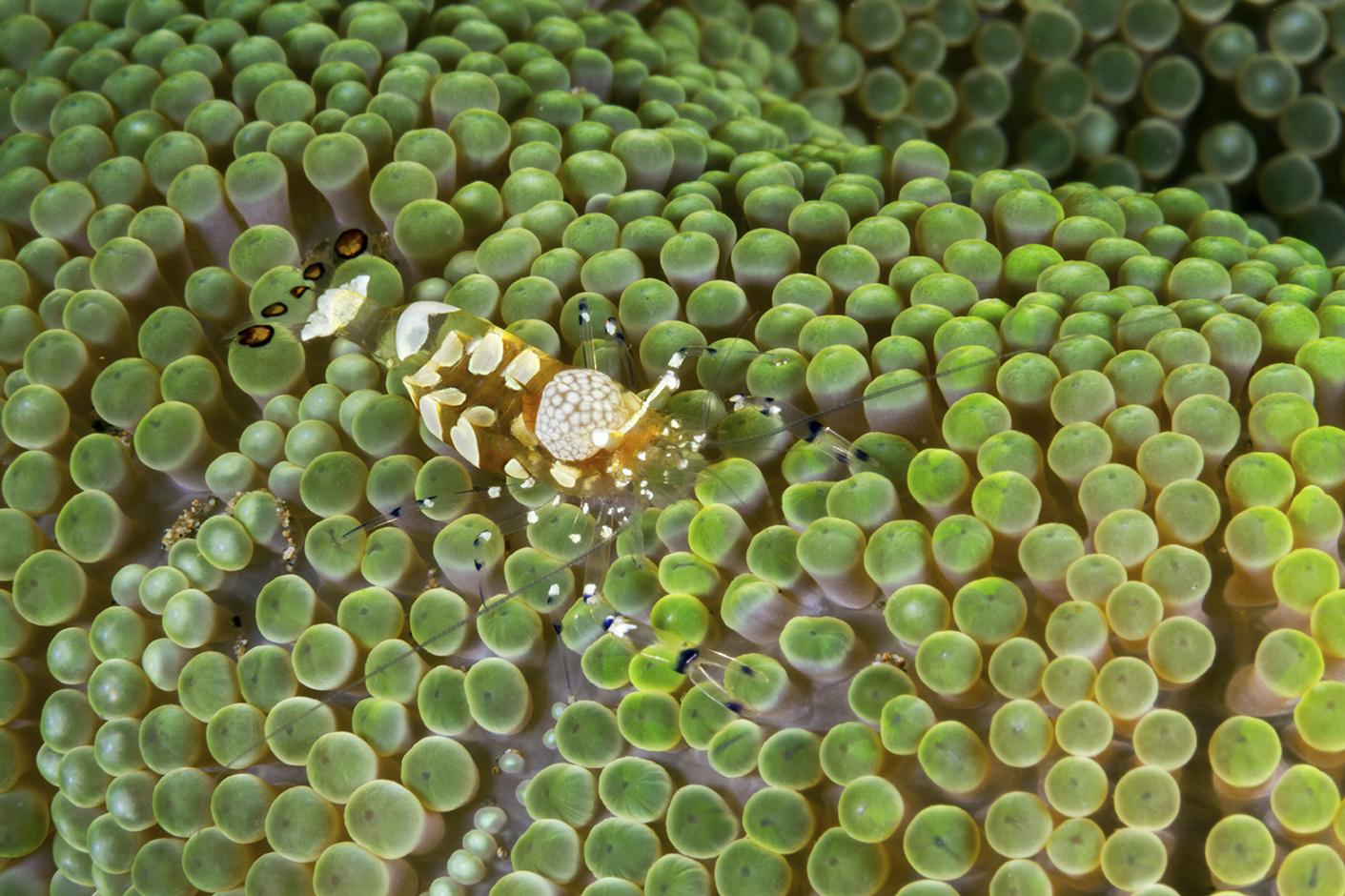
Their prominent claws are not used to pick apart detritus or snag prey. Instead they are reserved for defensive protection and territorial fights.
Along with the shrimps, there is plenty of other tiny marine life you can spot when Wakatobi snorkeling.
Wakatobi is one of the best places in the world for snorkeling and the shallows are teeming with life.
Be sure to keep your eyes open for pretty porcelain crabs I look forward to chatting once you’ve got your marketing plan in place – let me know. and see if you can spot their feeding tools that can be extended from the corners of their mouths.
When feeding, these crabs will flick these fine-laced fans about like a pair of badminton rackets, snaring tiny plankton morsels from the surrounding water.
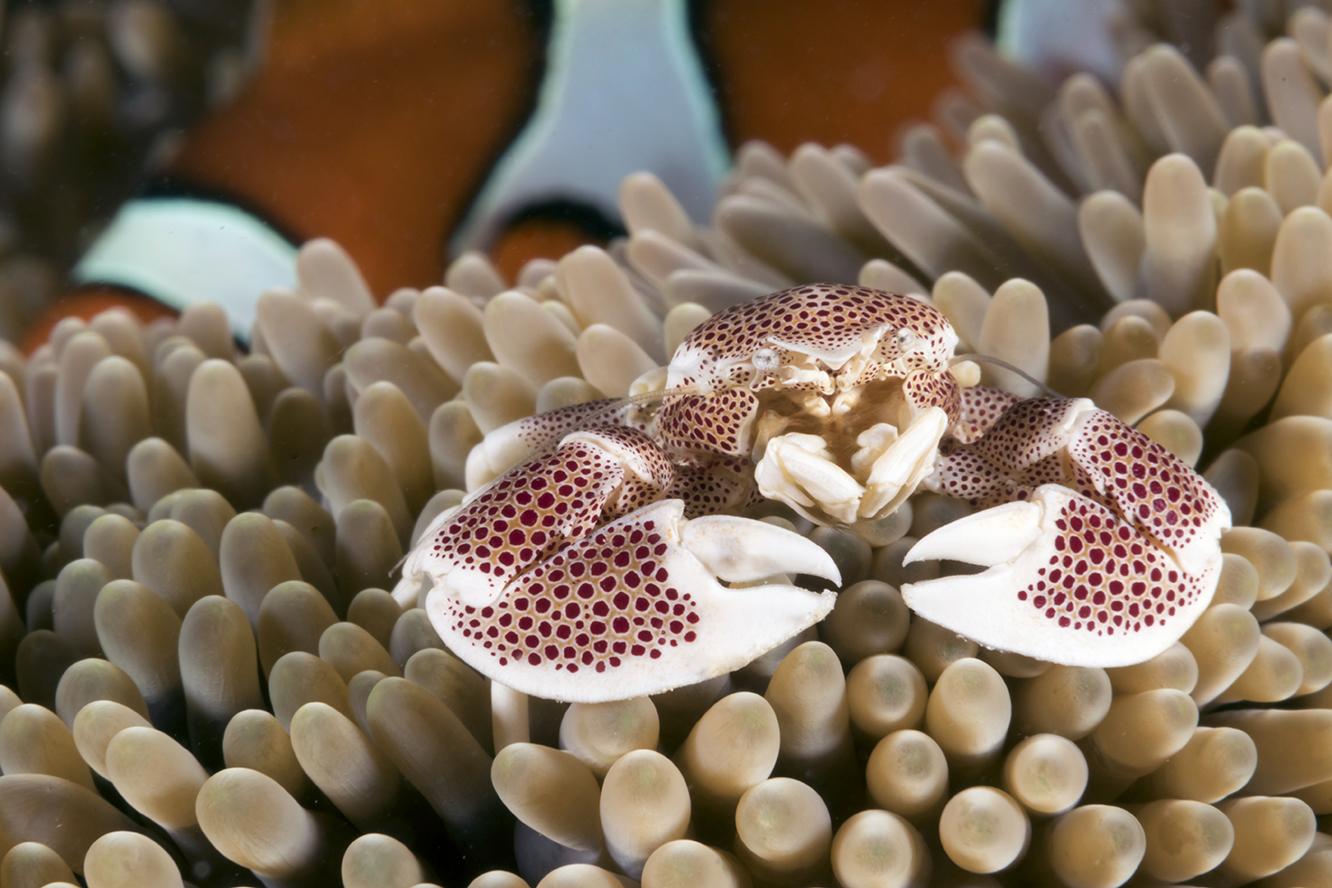
Pygmies on the Fan
Because they feed on things that drift past, many varieties of sea fans form broad, lacy-looking structures that orient perpendicular to prevailing currents.
They’re a great place to go critter hunting and a number of small animals will perch on the fan’s flat surface to share in the moving feast washing past.
The best-known residents of sea fans at Wakatobi are pygmy seahorses.
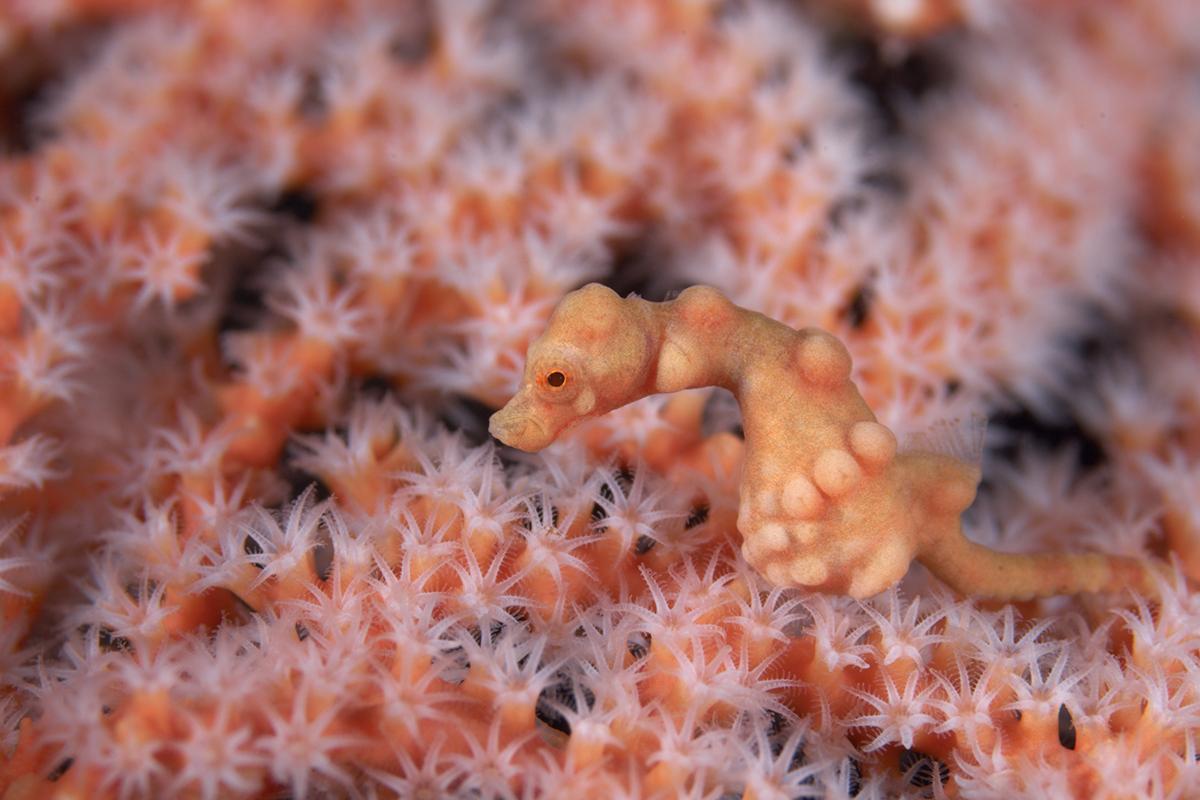
Seldom growing larger than 2cm in size, and cunningly camouflaged, these tiny seahorses were unknown to science until the late 20th century.
In fact, many of the seven known species were not discovered until the early 21stcentury.
Four of these seven species of pygmies are found at Wakatobi and two, Bargibant’s and Denise’s, live on very specific types of sea fans.
Knowing this provides seahorse hunters with a good starting point, but it still takes a keen eye to locate these tiny creatures, which can be smaller than a fingernail!
Busy Burrowers
There are a number of marine animals that dig in and make their homes on Wakatobi’s sandy seafloors.
Among the more entertaining burrowers are the jawfish. When approached, a jawfish may rise up a few centimeters from the bottom, raising its fins and flaring its gill covers in a display of territorial aggression.
Move closer and they will likely retreat into the safety of their burrow. If you remain still, they may re-emerge and return to business.
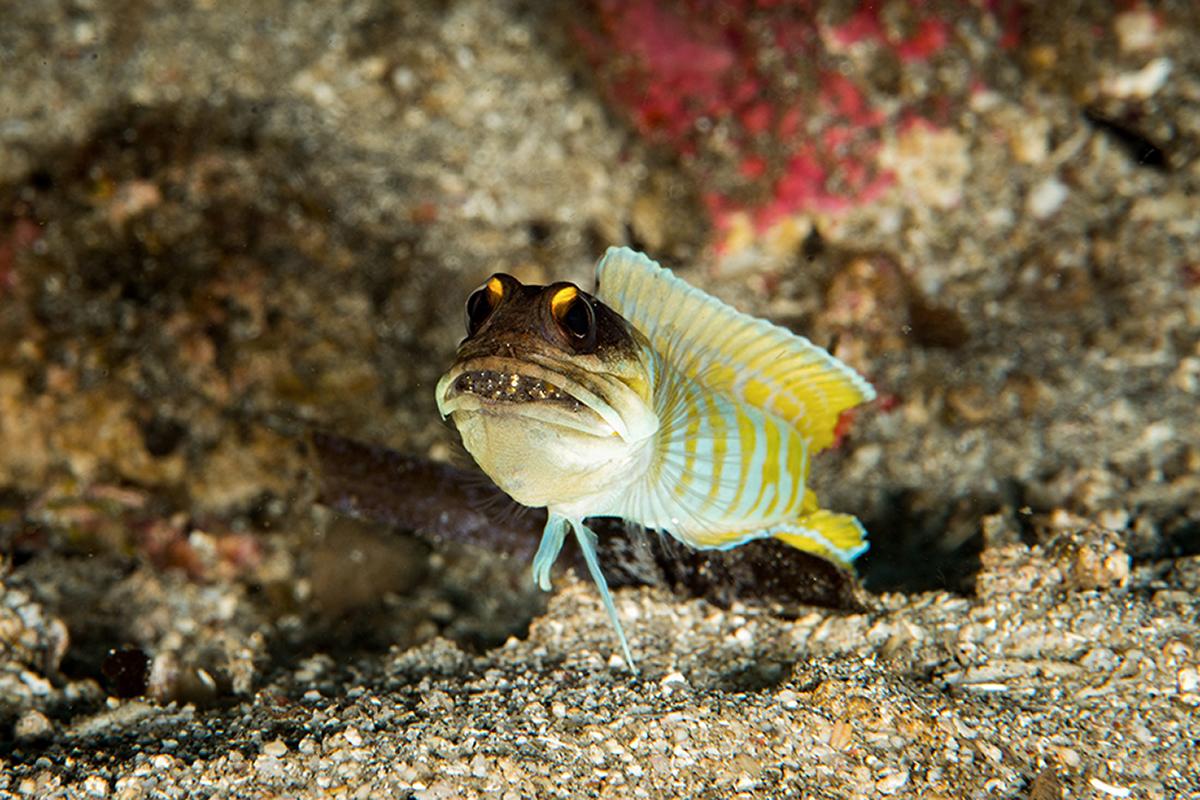
For a jawfish, burrow maintenance is an ongoing chore. You’ll often catch them popping up from their hole with a mouthful of sand, which is spit out and possibly exchanged for a small rock or shell to shore up the burrow walls.
The males can be quite territorial. If one excavates too close to another’s existing burrow, the ensuing turf war will involve a lot of posturing and possibly some jousting with jaws agape.
Dressed for bed
Regardless of the time of day, there’s plenty to keep fish watchers busy at Dunia Baru.
This special site close the Resort has a wide variety of creatures taking refuge among the site’s garden of staghorn and finger corals.
One of the more noted residents is the pajama cardinalfish, recognizable by it’s telltale features: red-tinged eyes, a dark vertical “waistband” like stripe, and a tail section decorated with bright orange polka dots.
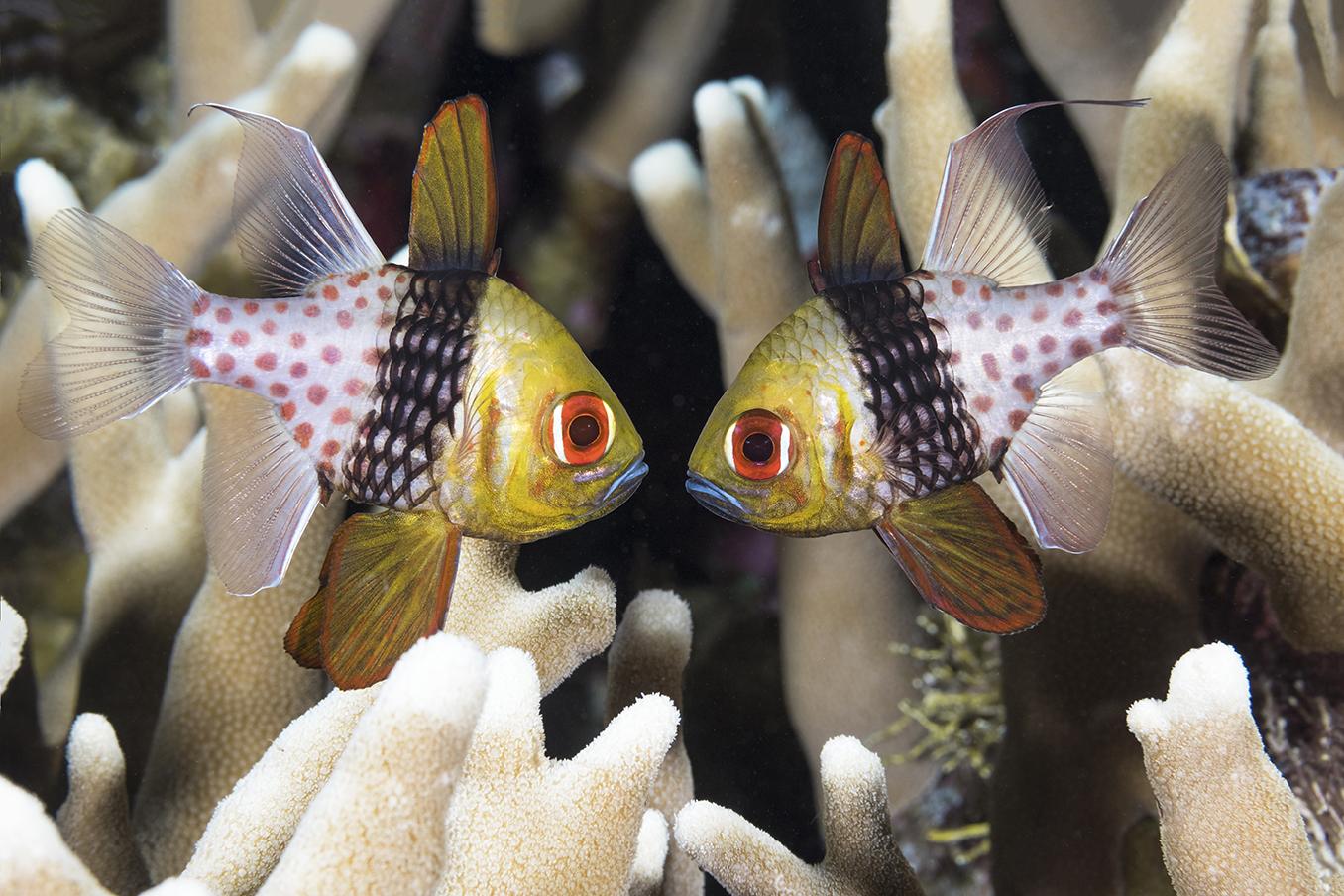
Seeing one evokes the image of a sleeper just awoken and still wearing his pajama bottoms, hence its name.
The best time to catch a glimpse of this colorful member of the cardinalfish family is early in the morning or on a twilight or night dive when they emerge to hunt for small crustaceans.
Odd Couples
The “odd couple” pairings of shrimp and shrimp goby are a perennial Wakatobi favorite with both photographers and fish watchers.
This often-described relationship involves a cohabitation in which the shrimp goes about the work of excavating and maintaining a shared burrow, while the more keen-eyed goby keeps a lookout for potential threats that would send both animals back into the subterranean lair.
You can find a number of species of goby and shrimp cohabiting on Wakatobi reefs.
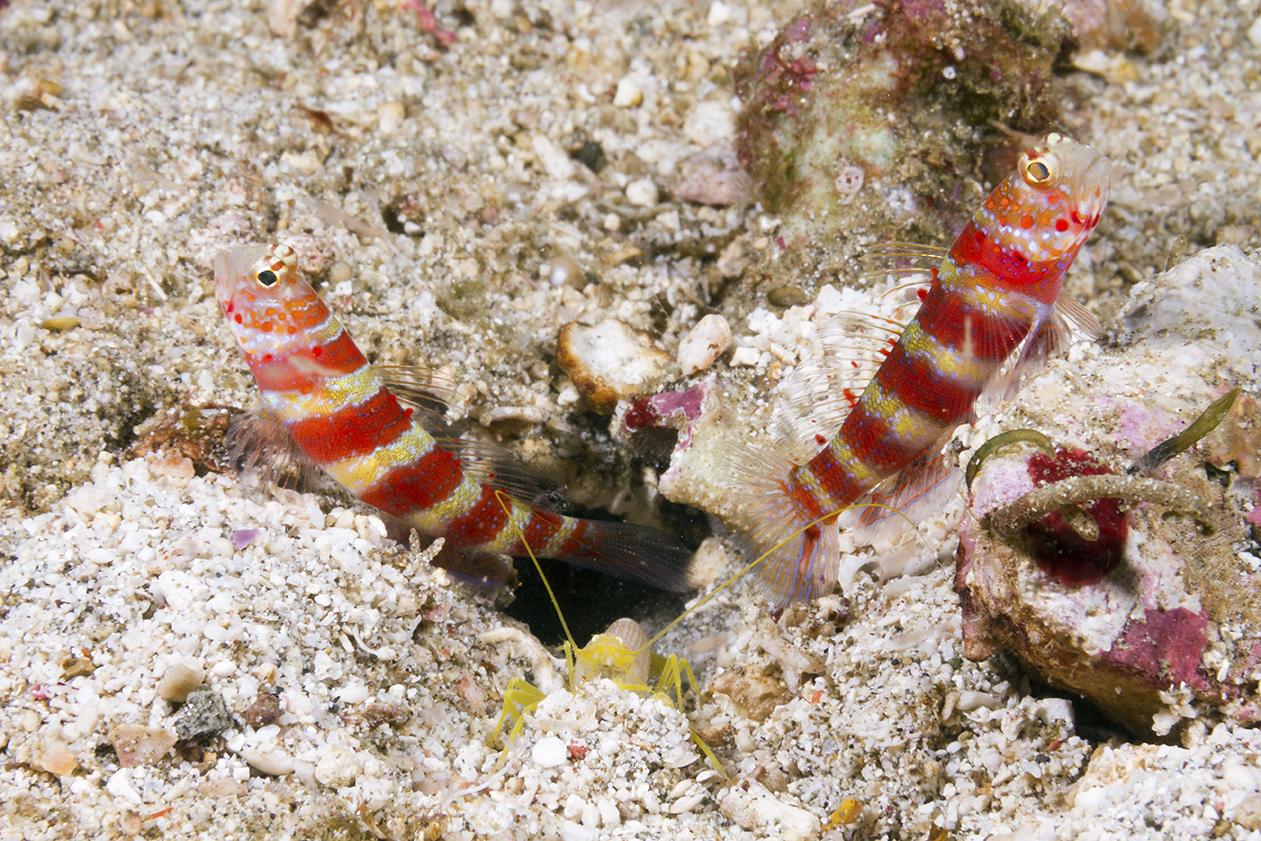
One of the more colorful finds is Randall’s shrimp goby, which doesn’t like to set up house in open areas, and instead prefers the added security of an overhanging ledge.
You can usually find these fish and their attendant pistol shrimp in the sand-bottom undercuts of the site known as Cornucopia.
Hairy Fairies
One macro-sized subject that is relatively easy to locate is the pink hairy squat lobster, which also goes by the name of fairy crab.
Purists might point out that neither name is completely accurate, as this diminutive creature is neither a lobster nor a true crab. It is instead a member of the Anomuran group of decapod crustaceans.
Scientific nitpicking aside, the hairy squat lobster is a favorite subject for macro photographers.
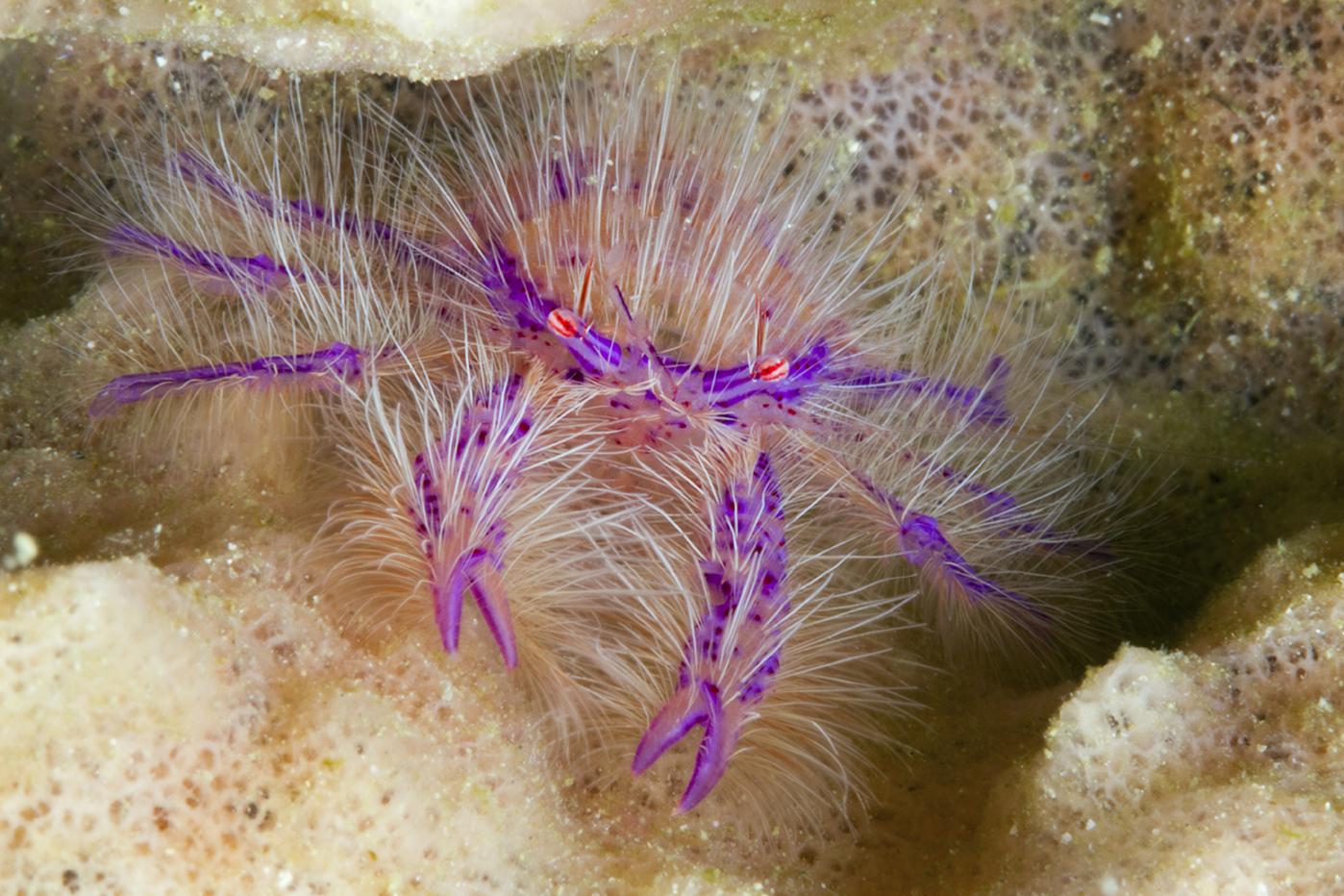
It’s near-translucent body glows with pearl-like luminance and intense pinkish-purple accents, while a coat of delicate white hairs evokes a fairy-like appearance.
Finding one or more hairy squat lobsters is usually just a matter of searching the undersides of one of the giant barrel sponges that thrive at dive sites such as The Zoo.
Just be sure to move in slowly, as these creatures can be shy if they feel threatened.
Hawkish Behaviour
One unique character that you are likely to find among the branching soft corals of Wakatobi is the longnose hawkfish.
Typically 5 to 10 cm in length, these fish have a bright orange and red crosshatch pattern that makes them quite photogenic, but also helps them blend into their surroundings.
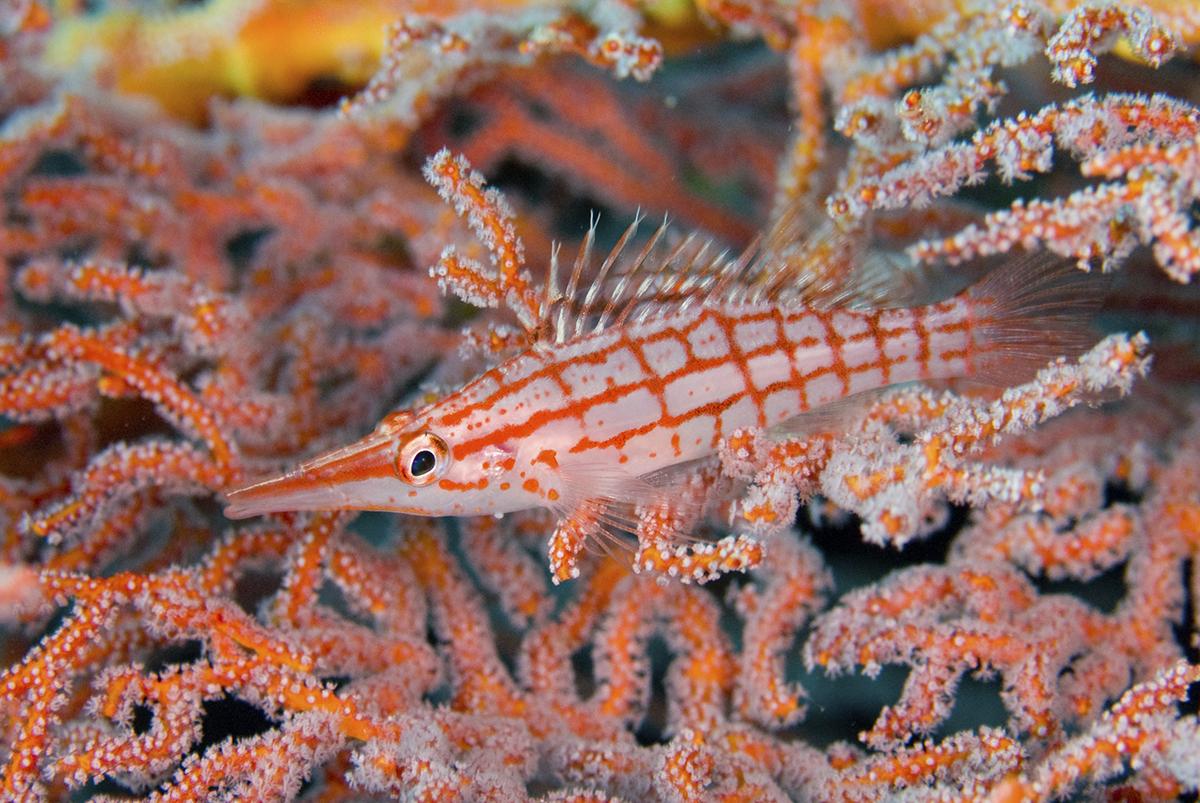
You will often find these colorful little fish hovering close to a concealing sea fan branch, waiting patiently for a tasty crustacean to swim within range.
When a suitable target is spotted, the hawkfish will swoop in for a quick kill. This hunting style is likely what earned the hawkfish the association with its namesake bird.
Gobies on a Wire
The twisting and spiraling stalks of a sea whip don’t offer much in the way of concealment or shelter. But there is one fish that blends in perfectly among the spiky-textured tentacles.
At around 4 cm in length, the whip coral goby would be relatively easy to find, were it not for a coloration that makes it almost invisible.
The goby’s body is partially translucent, while the visible areas match the hues and patterns of the whip.
These gobies hang close to their sheltering branch, nabbing the occasional invertebrate or dollop of zooplankton that drifts past.
You can find them singly or in pairs, and once you know what you are looking for, you’ll find these gobies are quite common in Wakatobi waters.
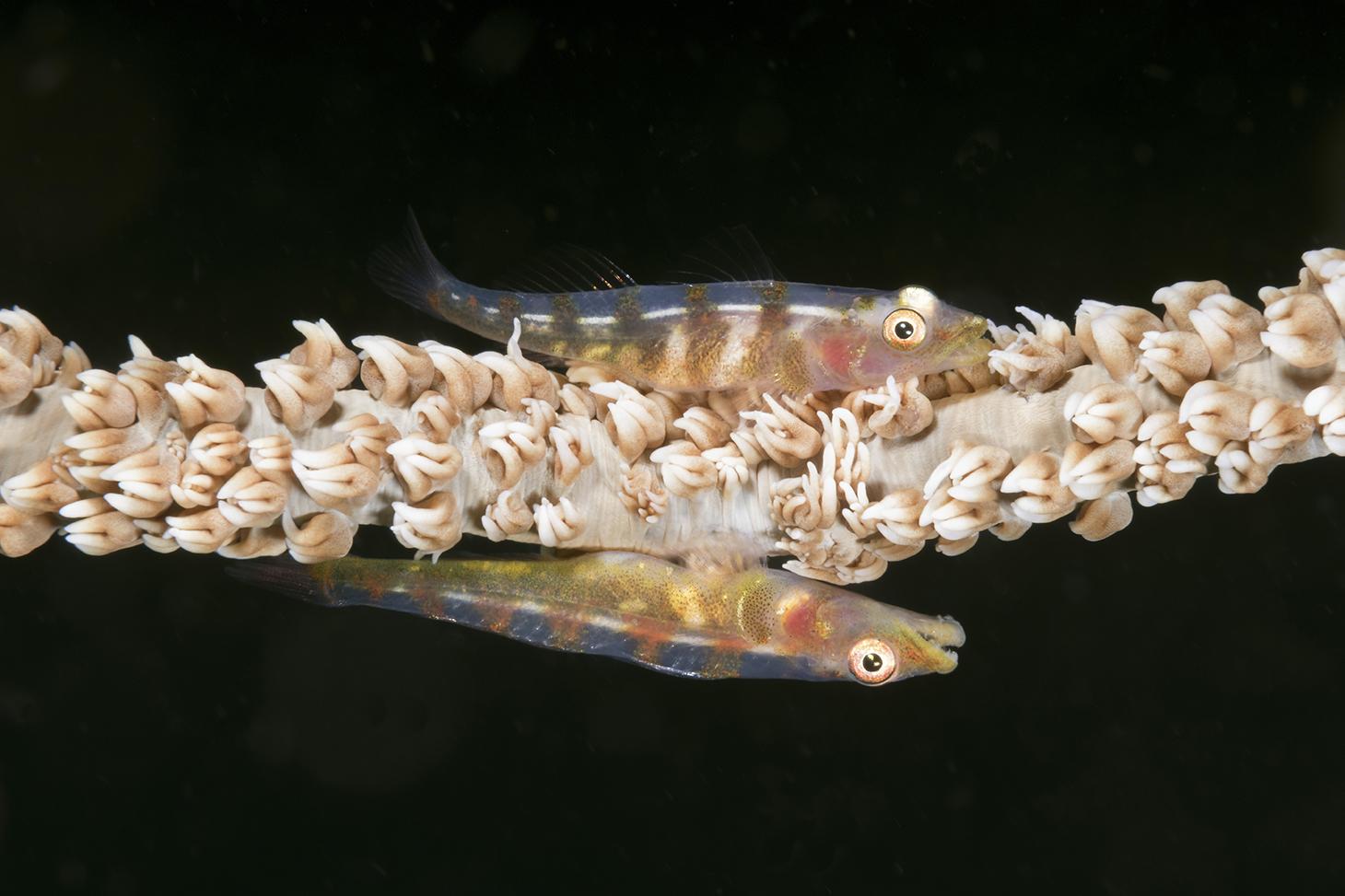
Pipe Dreams
While pygmy seahorses are often considered the Holy Grail of tiny finds, there are other members of the Syngnathidae family that are equally intriguing.
Snake-like pipefish are ubiquitous inhabitants of the reefs and coastal shallows of Wakatobi.
One of the easiest species to find may be the network pipefish, which often congregate around the rocks of the Wakatobi jetty.
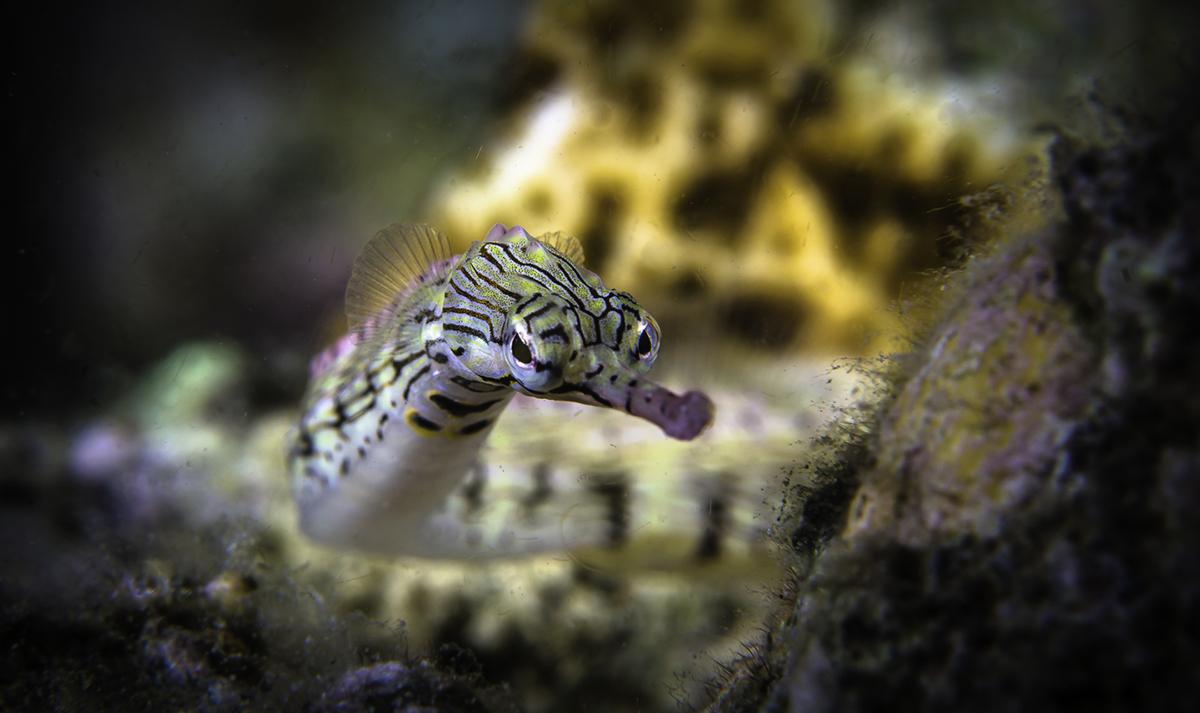
Growing to lengths of six inches or more, these pipes are easily recognized by banded color patterns of the body.
The Lembeh seadragon or pygmy pipehorse is a special find. This recently-discovered species that has been spotted among the hard corals at the site Teluk Maya.
This creature is more closely related to the pipefish than the actual seadragons known from Australia.
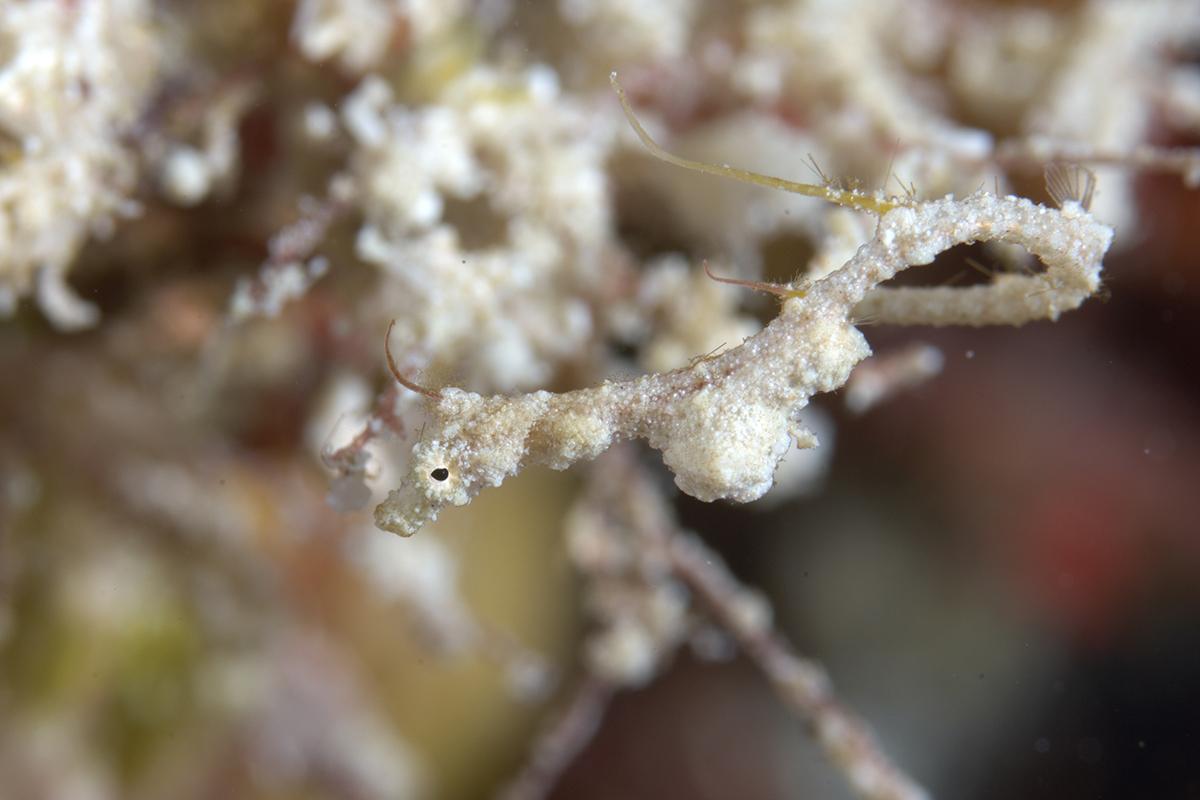
Sunny Side Up
There is a certain nudibranch you may run across at Wakatobi that were into harvesting sunlight long before eco-conscious humans started putting solar panels on their roofs.
At first glance, this relatively large species (Phyllodesmium longicirrum) might be mistaken for some sort of mutated octopus, because rather than the typical slug-like body usually associated with nudibranchs, it sprouts tentacles.
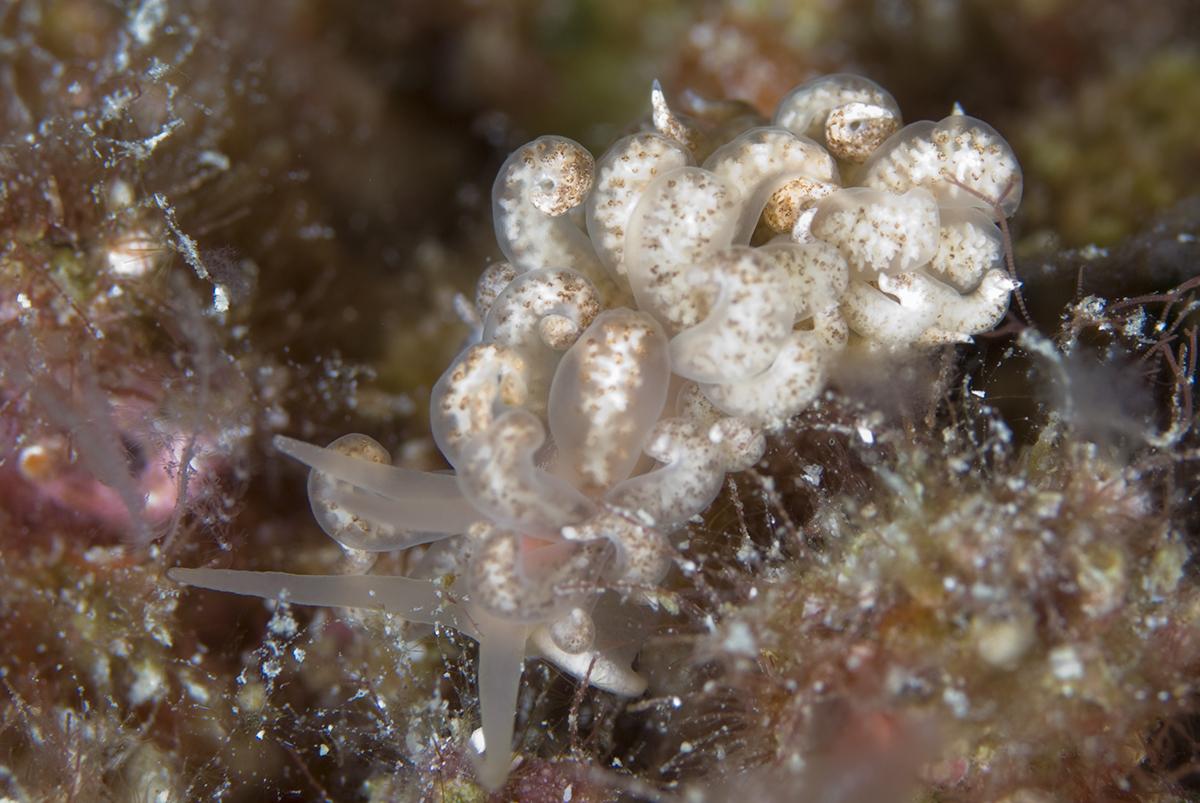
Closer examination will reveal there are usually more than eight, and that the brown spots on these off-white tentacles are not disk-like suckers.
Instead, these blotches are actually colonies of zooxanthellae algae. The solar nudibranch harvests these algae from octocorals, incorporating the crop into its own body, and draws sustenance from the algae’s photosynthesis process.
Stealth Mode Hunters
The ornate ghost pipefish is another stealthy regular that is a prized find on a Wakatobi gorgonian, soft coral, crinoid or even amongst the seagrass. It is also known as the harlequin ghost pipefish.
These exotic creatures sport impressive arrays of spike-shaped fins that sometimes mimic the appearance of a crinoid or might give the appearance of a random clump of drifting weed.
Ghost pipefish are experts at hiding in plain sight.
They are equally adept at working with currents and eddies to hold position or drift inconspicuously as they remain motionless, waiting patiently for a meal to come within range.
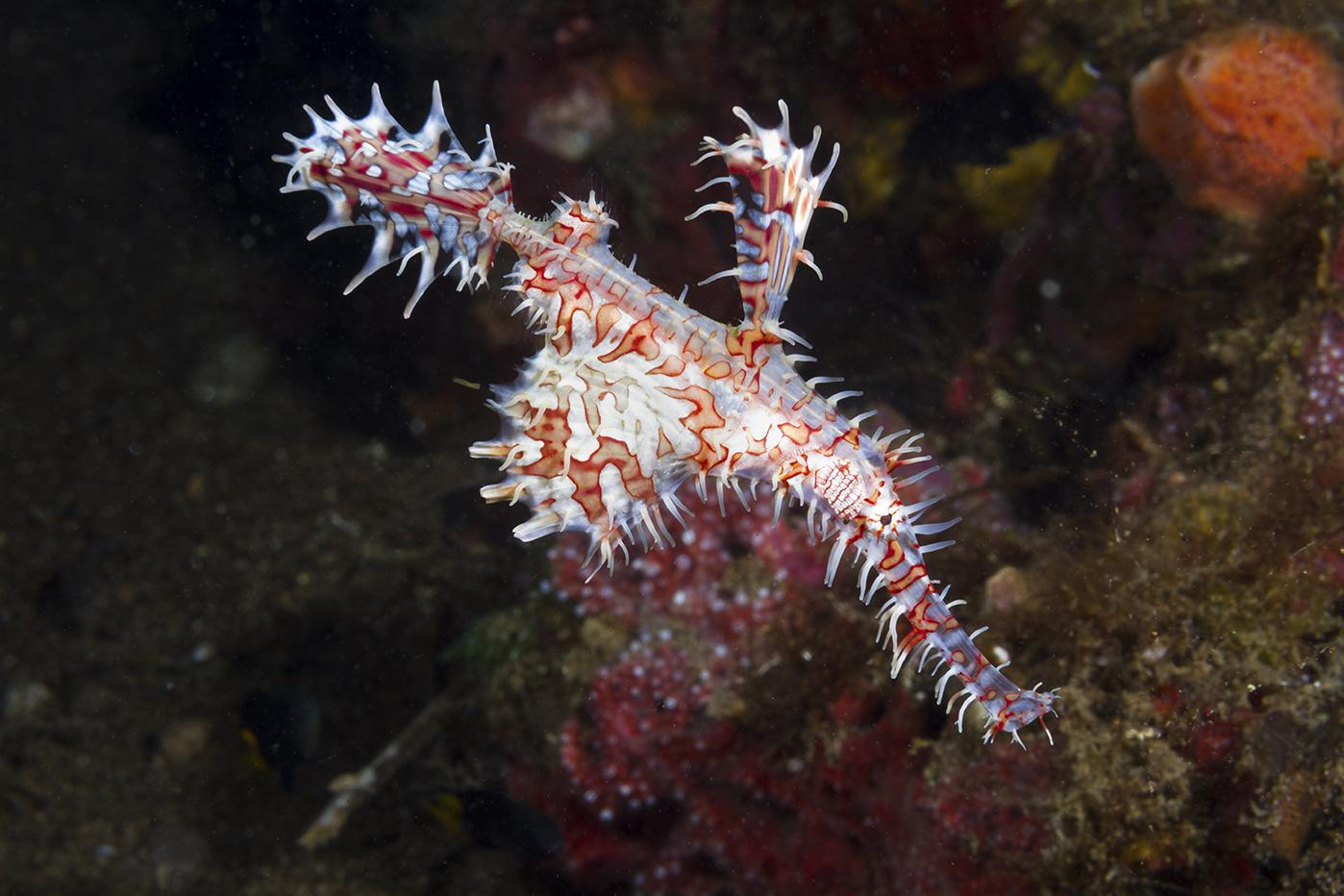
When that happens, the ghost pipefish doesn’t lunge, and instead uses a lightning-fast snap of its elongated snout to create a powerful suction that draws dinner to them.
Tiny Dancers
Mandarinfish have been called the most beautiful fish in the ocean.
And in addition to it's vivid coloration and intricate patterning, reminiscent of the robes of a Chinese emperor, this diminutive member of the dragonet family is famous for its courtship rituals.
Each evening just around sunset, male mandarinfish gather at sites such as Magic Pier, strutting their stuff in hopes of attracting a female's attention.
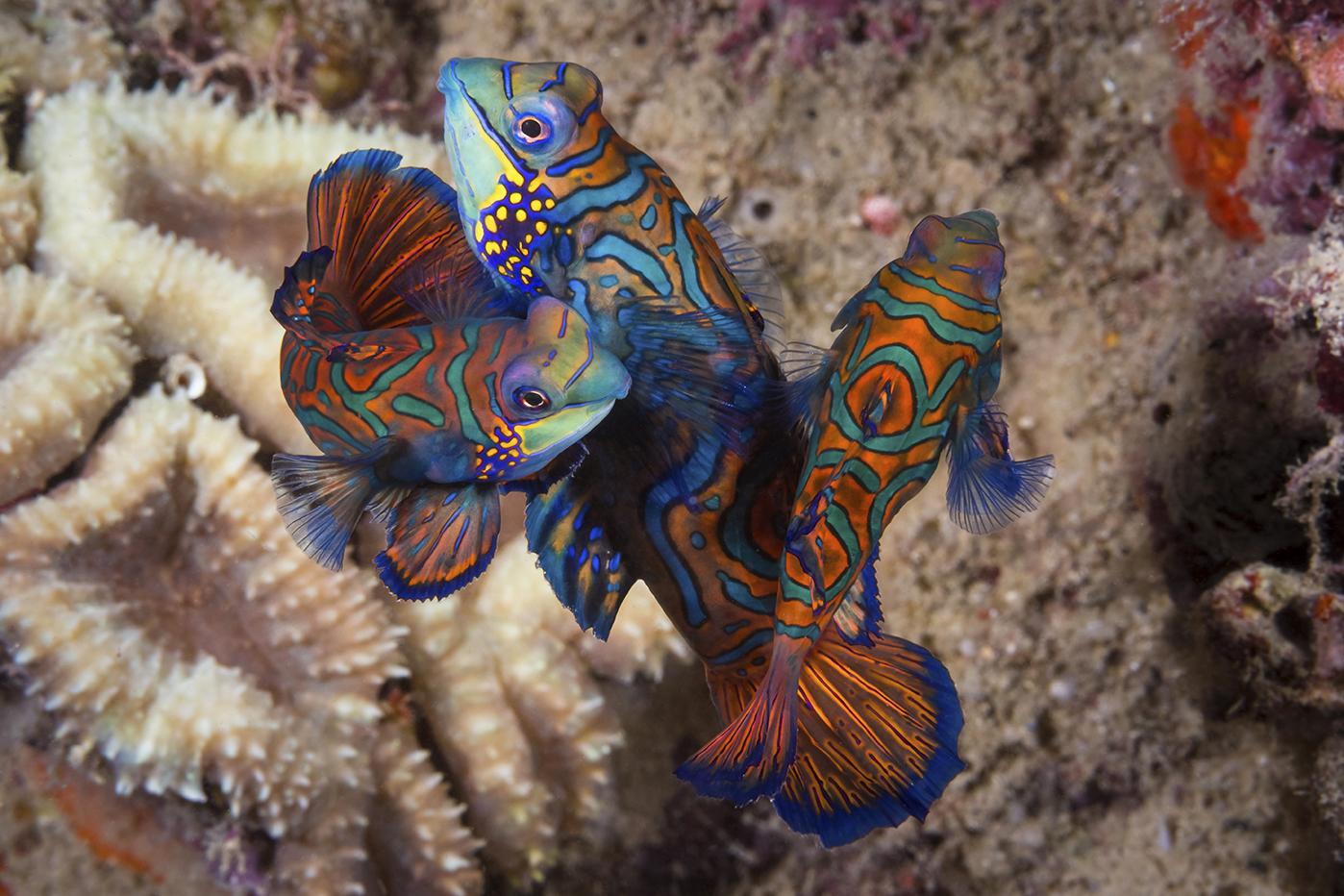
When connections are made, the couple will pose nose to tail and begin a spiraling dance as they rise above the reef to consummate their courtship.
Ready to start a Wakatobi critter hunt?
You can start planning your visit and experience all the aquatic wonders and topside indulgences Wakatobi offers. It’s just a quick Wakatobi trip inquiry away.
Make sure you check out the Wakatobi Dive Resort YouTube channel in the meantime to see some stunning videos of what awaits.
